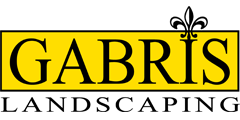[av_slideshow_full size=’no scaling’ stretch=” animation=’slide’ autoplay=’false’ interval=’5′ control_layout=’av-control-default’ src=” attachment=” attachment_size=” position=’top left’ repeat=’no-repeat’ attach=’scroll’]
[av_slide_full slide_type=’image’ id=’2859′ video=” mobile_image=” video_format=” video_ratio=” title=” custom_title_size=” custom_content_size=” caption_pos=’caption_right caption_right_framed caption_framed’ link_apply=” link=’lightbox’ link_target=” button_label=” button_color=’light’ link1=’manually,http://’ link_target1=” button_label2=” button_color2=’light’ link2=’manually,http://’ link_target2=” font_color=” custom_title=” custom_content=” overlay_opacity=’0.1′ overlay_color=” overlay_pattern=” overlay_custom_pattern=”][/av_slide_full]
[/av_slideshow_full]
[av_textblock size=” font_color=” color=”]
Shrub and Tree Pest Control
The key in any successful shrub and tree pest control treatment program is to first identify the species of tree or shrub. The pests that affect our trees and shrubs are insects, fungus, and bacteria. Once a tree or shrub has been accurately identified, we can usually narrow down the possible issues to those common to that plant.This narrowing of the potential culprits allow us to better control some problems with preventative measures. Other issues may only need post-emergence shrub and tree pest control.
Some common insects we treat for in our area as part of our shrub care service include aphids, bagworms, spider mites, scale, weevils, and more. All insects don’t attack all species of trees and shrubs.There are also some insects (such as Fall Webworms) which could be treated even though treatment is not necessary or recommended.
The tougher pests to control on our shrubs tend to be fungus and bacteria. Due to the nature of these pests, we can’t permanently kill them off. Although we treat fungal issues with products labeled as “Fungicides,” they actually function more like fungi-stats. In other words, we can only temporarily suppress these problems. Such suppression can lead to reduced populations, inevitably providing control at an acceptable threshold. The important thing to remember is that these fungicide treatments are not a “cure” to the disease, just a weapon used to help the plants fight back. The good news is that due to our constant weather changes, temporary suppression and control are usually all we need to keep plants healthy in our area.
When a tree or shrub has a bacterial infection it’s almost always a sure death sentence. Unlike humans, we can’t just give plant’s antibiotics. Their immune systems function significantly different than us as humans. The only real shrub and tree pest control methods we have for bacteria are pruning away dead material with disinfected tools and tree injections with a bacteria-stat. Regardless of the problem, it seems that timing is always the most critical aspect in a successful tree, shrub, or turf pest control program.
[/av_textblock]

